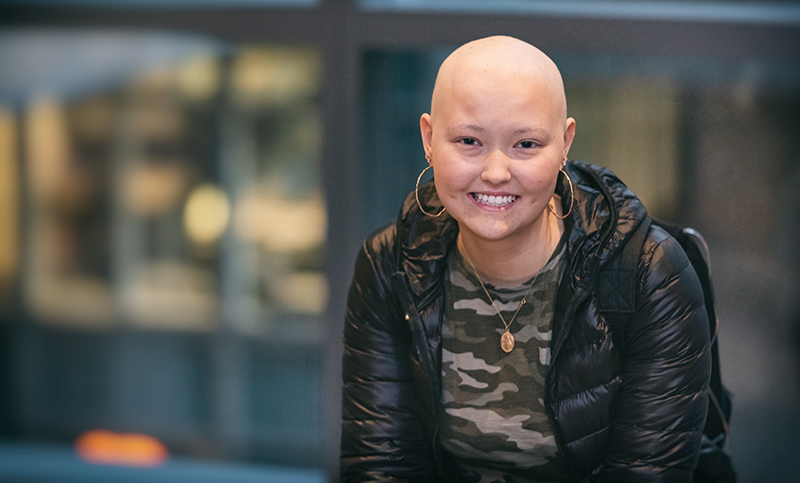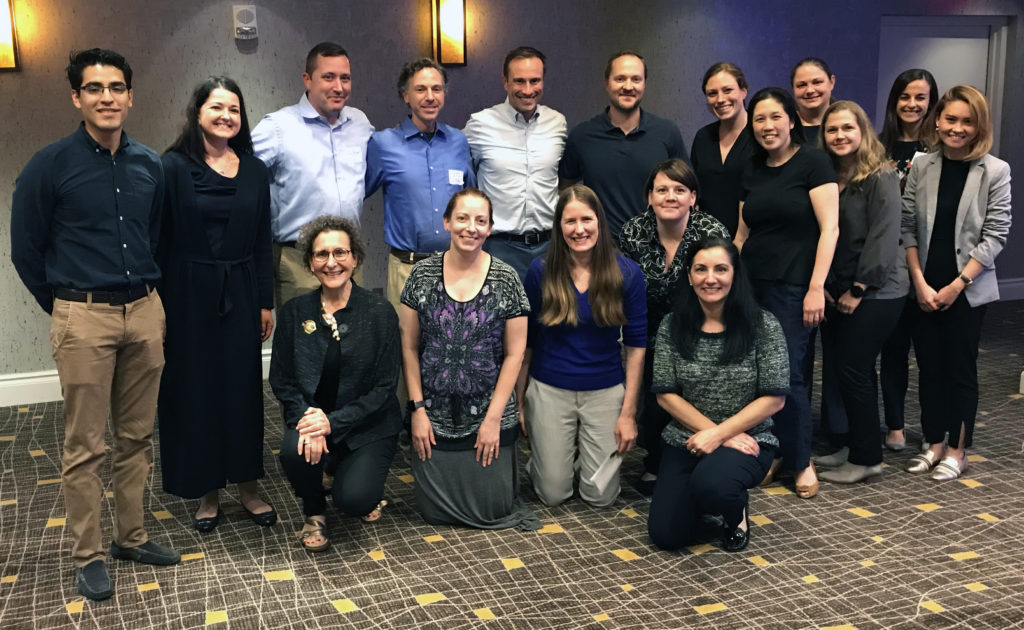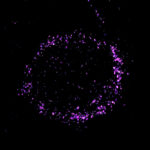Hope in the shadow of Li-Fraumeni syndrome

Jake was diagnosed with his first cancer — osteosarcoma — in 2007 when he was only 16 years old. Meanwhile, his mom was being treated for recurrent cancer and his brother also would soon be diagnosed with cancer. Within the space of a few years, all three family members had died. This was not the result of terrible coincidence but rather, a hereditary condition known as Li-Fraumeni syndrome (LFS).
It’s a story painfully familiar to families with LFS, a rare cancer predisposition syndrome caused by a mutation (alteration) in the TP53 gene. The cells that make up the human body use the TP53 gene sequence as a blueprint to produce the p53 protein, nicknamed the “guardian of the genome.” The p53 protein functions as a tumor suppressor, protecting us from developing certain cancers, such as leukemia, sarcoma, breast, and adrenal cancer. When TP53 has a mutation, a damaged form of the p53 protein is produced that does not function properly and allows cancer cells to develop and grow unopposed.
In patients with LFS who inherit a mutation in the TP53 gene, all the cells of their body produce some of this dysfunctional p53 protein, often resulting in the development of cancer at an unusually young age. More than 20 percent of those with LFS will develop a TP53-related cancer before their 20th birthday. Clinicians and scientists who study this syndrome hope that early detection of cancers in these patients will improve outcomes.
Jake’s mother was unaware she had LFS until it had already impacted the next generation of her family. And although diagnostic testing for LFS was available, by the time her family underwent testing, it was already too late to benefit her or her sons.
The search for tumor DNA in the blood
When he met Jake, Brian Crompton, MD, a pediatric oncologist, was a fellow at Dana-Farber/Boston Children’s Cancer and Blood Disorders Center. As Crompton’s career progressed, from trainee to physician scientist running his own lab, Jake’s story was never far from his mind.
Fresh out of his fellowship, he focused his research on the genomics of Ewing sarcoma. Soon after publishing his first study, describing the landscape of Ewing sarcoma mutations, Crompton says, “There were these papers coming out indicating you could find traces of cancer DNA circulating in the blood. It got me thinking, can we find tumor DNA in the blood of pediatric patients with Ewing sarcoma and other pediatric solid tumors?”
During the next few years, Crompton and his colleagues at Dana-Farber/Boston Children’s, along with collaborating researchers at other institutions, worked to develop assays that detect tumor DNA from blood samples, often called “liquid biopsies.” This novel, noninvasive approach, would allow molecular profiling of a tumor without having to obtain tumor tissue by a conventional surgical biopsy. Their published research established the mechanism by which circulating tumor DNA (ctDNA) can be detected and measured in patients with five of the most common pediatric solid tumors: Ewing sarcoma, osteosarcoma, neuroblastoma, rhabdomyosarcoma, and Wilms tumor.
Connecting the research dots to improve early cancer detection
Crompton was also interested in exploring genomics and genetics in his clinical practice. He learned that Dana-Farber/Boston Children’s pediatric oncologist Junne Kamihara, MD, PhD, who had established a cancer predisposition program, was recruiting physicians and rapidly expanding. The goal of the Pediatric Cancer Genetic Risk Program is to combine comprehensive clinical care with access to cutting edge research — to help families just like Jake’s. Crompton seized the opportunity — it was déjà vu.
“In the Pediatric Cancer Genetic Risk Program, I started to see all these families with LFS,” Crompton says. “It brought back my whole experience with Jake. Kids are finding out they inherited this TP53 mutation, and their families have too many stories of cancer. It’s just devastating.”
For Crompton, it seemed immediately obvious that if he could detect tumor DNA in the blood of newly diagnosed patients, he could possibly detect it even earlier in those with a high risk of developing cancer.
“Of course, you can’t just roll liquid biopsy tests out to every pediatrician’s office in the world — it’s hard to justify testing children every year when their risk of developing childhood cancer is less than .02 percent. But kids with LFS have roughly a 20 percent chance of developing cancer during childhood. And it’s a test that we could do over and over again throughout their lives into adulthood.”

Darcey’s diagnosis
Data suggests there are significant survival benefits for those with LFS who follow a comprehensive screening protocol that combines testing such as ultrasounds, breast mammograms, colonoscopies, and annual whole-body (WB-MRI) and brain MRI examinations.
With this screening regimen, cancers are detected early, even in individuals who are asymptomatic. But it isn’t cheap. One of the biggest hurdles is getting insurance companies to cover WB-MRIs, which cost thousands of dollars per year, and according to Crompton, there are still challenges.
“One of the things we discuss with families is finding false positives,” says Crompton. “If you scan someone head to toe, it’s possible that we’ll find little doodads everywhere. So, the idea here is that we could develop a blood test that would be cheaper, easier, and possibly have less false-positives.”
Crompton began collecting blood samples in the clinic for testing, and, incidentally, around that time, started seeing a new patient with LFS, 16-year-old Darcey Boucher. Although asymptomatic, she began routine screening after learning she carried a TP53 gene with a mutation, passed down from her father, who was unaffected and had previously been unaware of the gene gone awry. The only indication was several instances of cancer in the family — an uncle who died of brain cancer, a grandmother who died of lung cancer, an aunt who had breast cancer, and, more recently, her sister, who was undergoing treatment for a rare cancer at Dana-Farber Cancer Institute.
Although Darcey’s first head-to-toe MRI showed no signs of cancer, less than a year later — one month shy of her annual MRI — a lump on her leg prompted Darcey to contact Crompton. “She comes in, gets a focused MRI of her leg, it’s concerning, gets a biopsy, also concerning — osteosarcoma. One of the big questions we have currently is how frequently these whole-body MRIs can or should be done. We need tests for families that are accurate and easier to do more frequently.”

The EDISYN Consortium
Months earlier, before Darcey’s MRI and before her bone cancer diagnosis, Crompton was at a conference with mentor and friend Joshua Schiffman, MD, medical director of the Family Cancer Assessment Clinic at Utah’s Huntsman Cancer Institute. It was there they decided to join forces, building a consortium dedicated to investigating liquid biopsy for early cancer detection in patients with LFS.
In June, they held their first in-person consortium meeting in Boston. The institutions together — Huntsman Cancer Institute, Boston Children’s Hospital, Dana Farber Cancer Institute, National Cancer Institute, Children’s Hospital of Philadelphia, University of Pennsylvania, Texas Children’s, and Children’s Minnesota — would collect blood samples from their patients with LFS at multiple time points, as often as they could — to build a test set to prove whether liquid biopsies could help with early cancer detection.
At the moment, the consortium, named EDISYN (Early Detection in SYndromic Neoplasms) is formalizing their group with a Memorandum of Understanding. Many of the institutions have already collected multiple patient samples; some of which were collected before the consortium was even a consideration.
Although likely several years away from a valid, routine standard-of-care test that insurance companies will cover, the concept has powerful potential.
“If we can push the dial back and pick up cancer before it’s even suspected, we can intervene earlier, and our patients are more likely to live longer, healthier lives.”
Learn more about the Li-Fraumeni Syndrome and TP53 Center.
Related Posts :
-

Thanks to Carter and his family, people are talking about spastic paraplegia
Nine-year-old Carter may be the most devoted — and popular — sports fan in his Connecticut town. “He loves all sports,” ...
-

“A setback for a comeback”: Brody perseveres with Paget-Schroetter Syndrome
Baseball has been part of Brody Walsh’s story from the very start. Now 19 and a college sophomore, Brody pitches ...
-

Tough cookie: Steroid therapy helps Alessandra thrive with Diamond-Blackfan anemia
Two-year-old Alessandra is many things. She’s sweet, happy, curious, and, according to her parents, Ralph and Irma, a budding ...
-

A new druggable cancer target: RNA-binding proteins on the cell surface
In 2021, research led by Ryan Flynn, MD, PhD, and his mentor, Nobel laureate Carolyn Bertozzi, PhD, opened a new chapter ...





